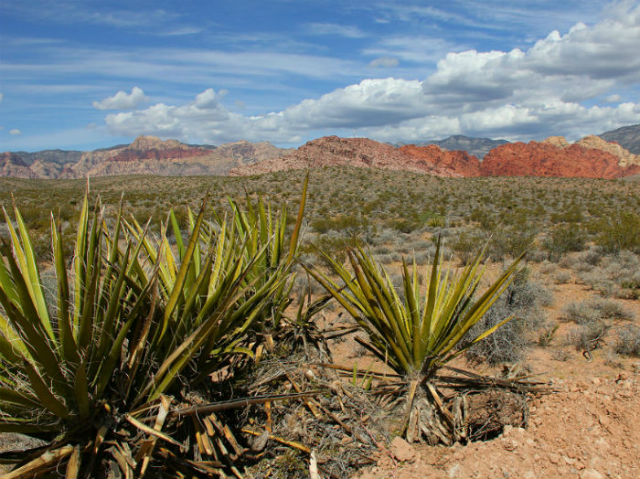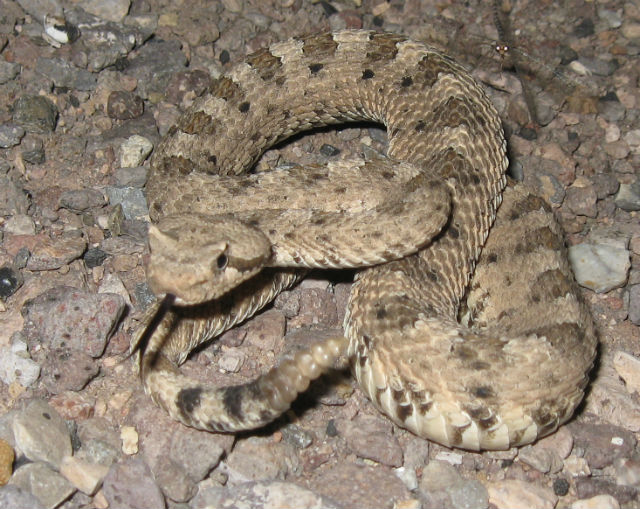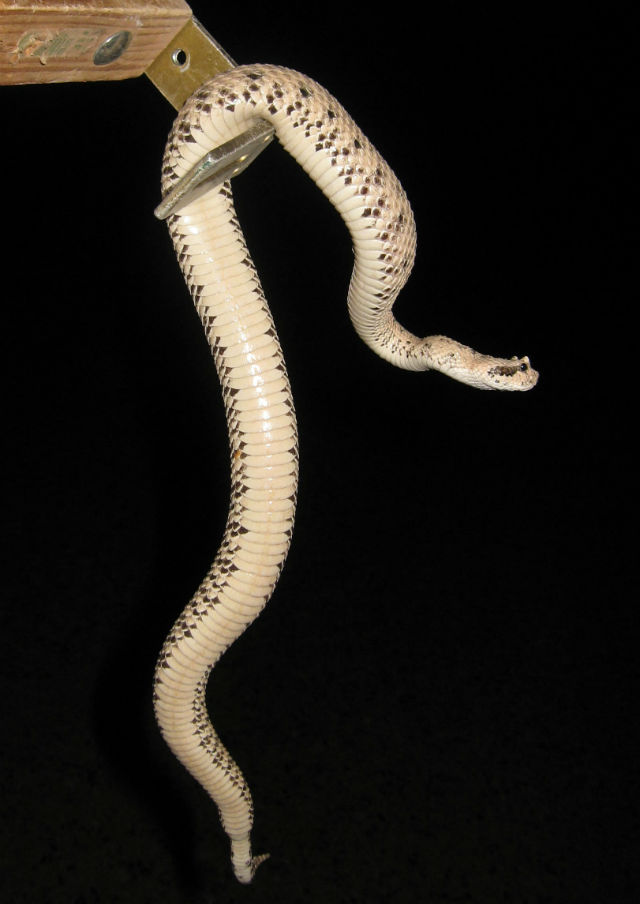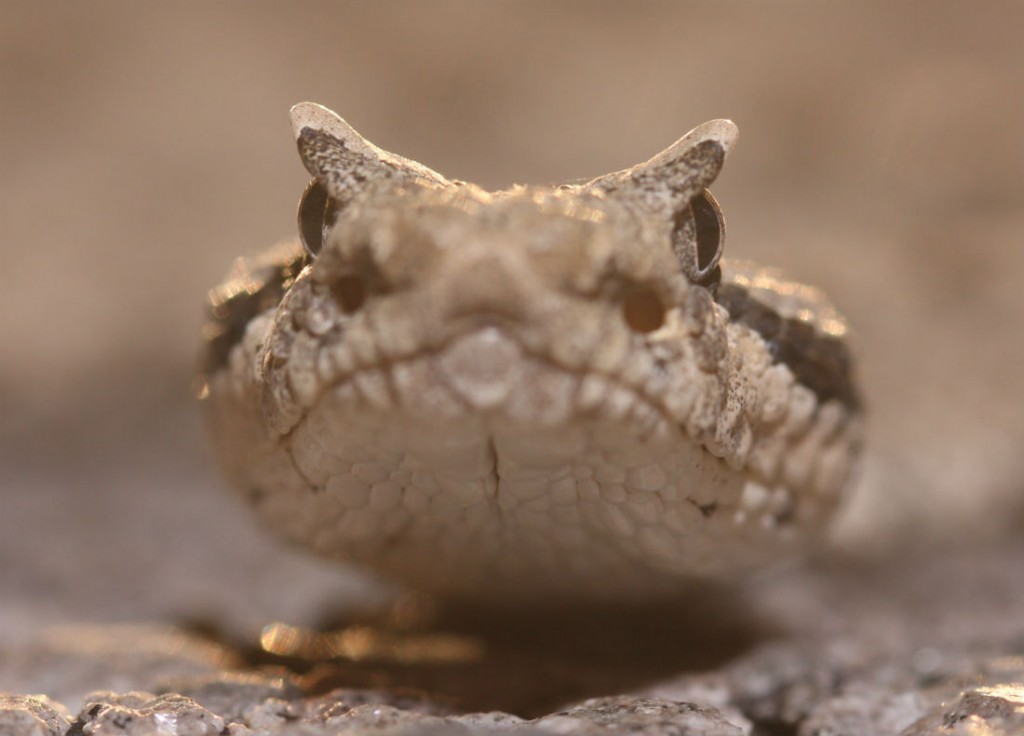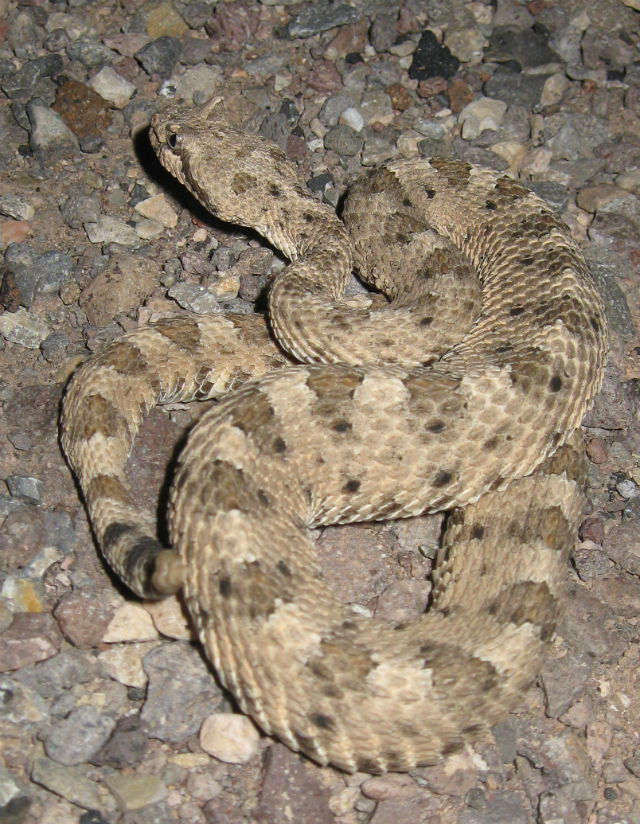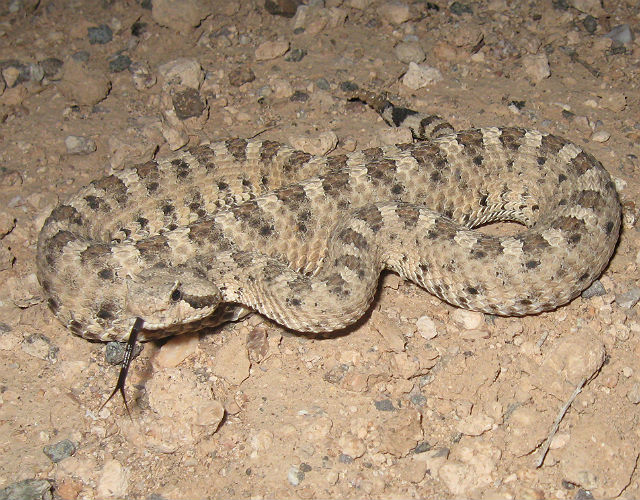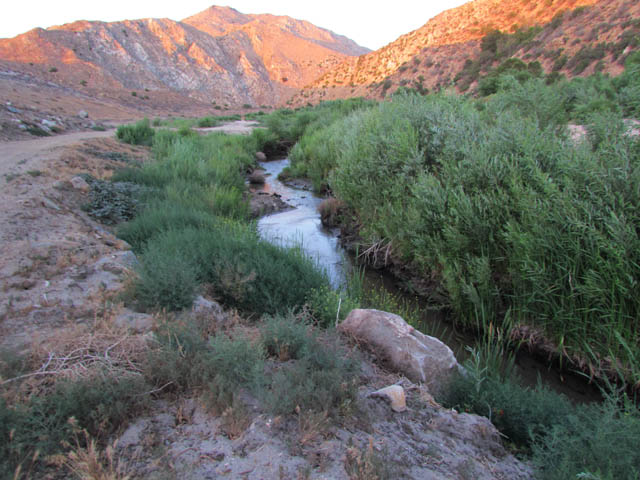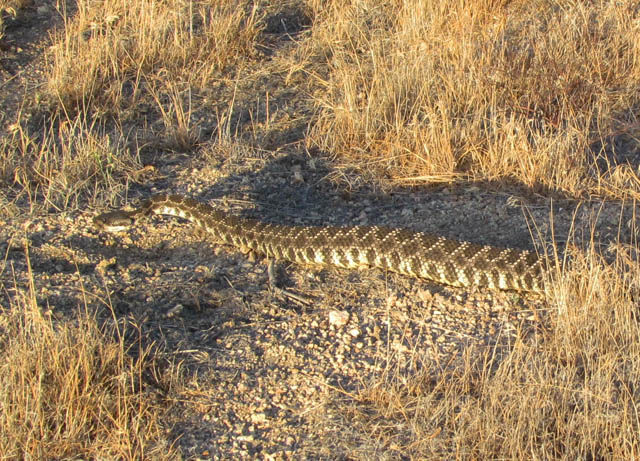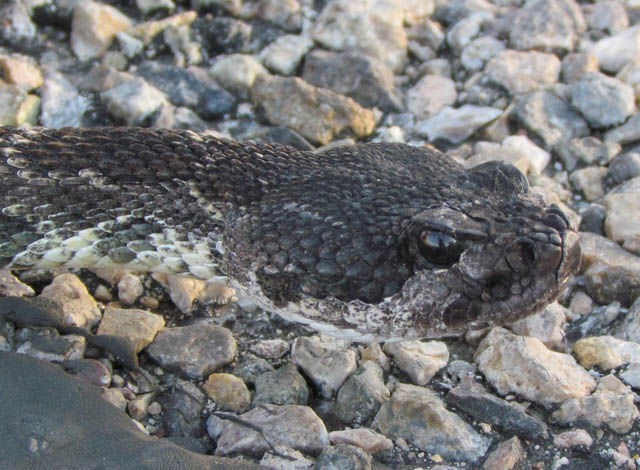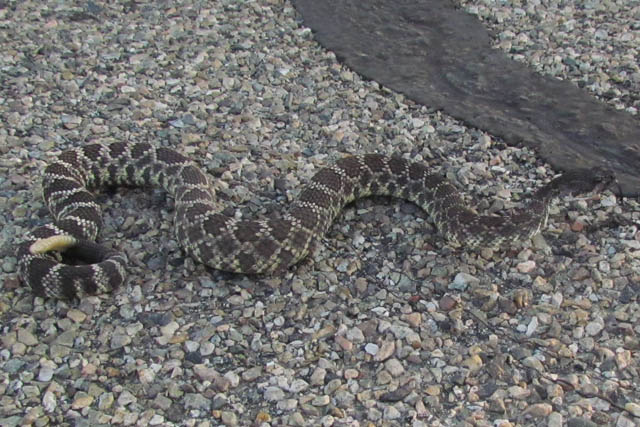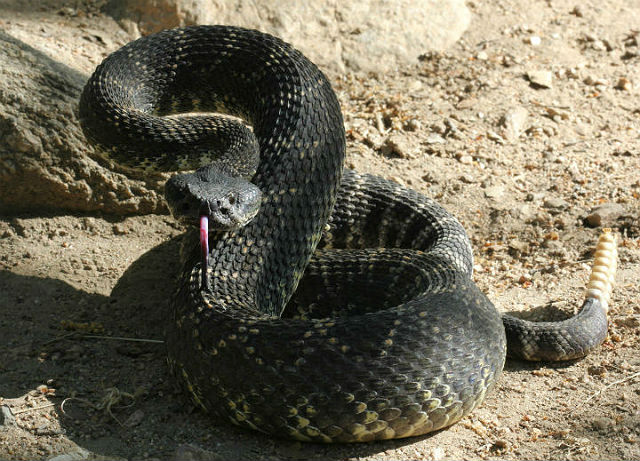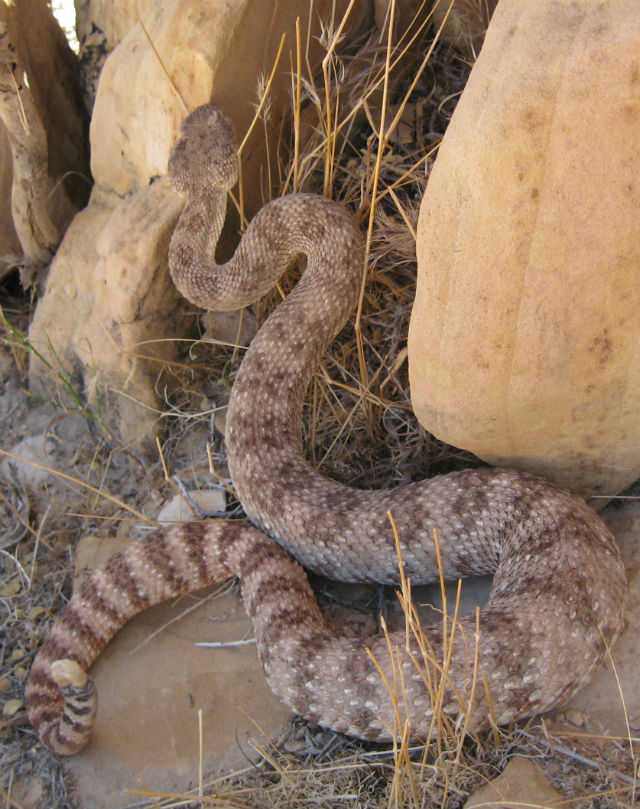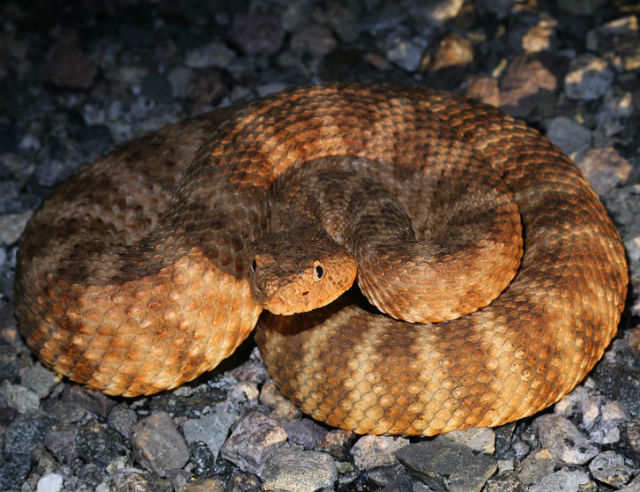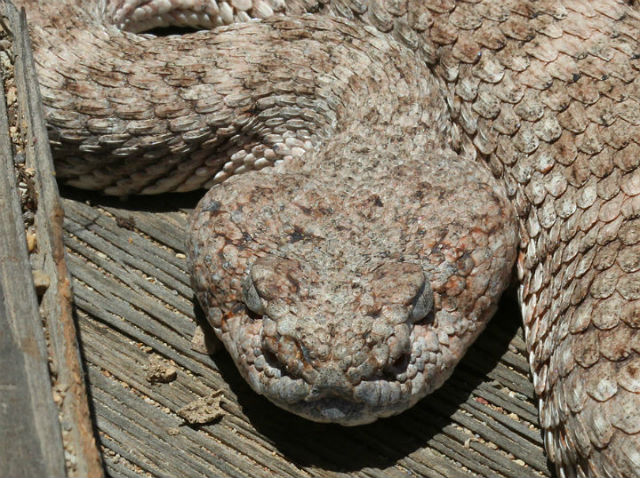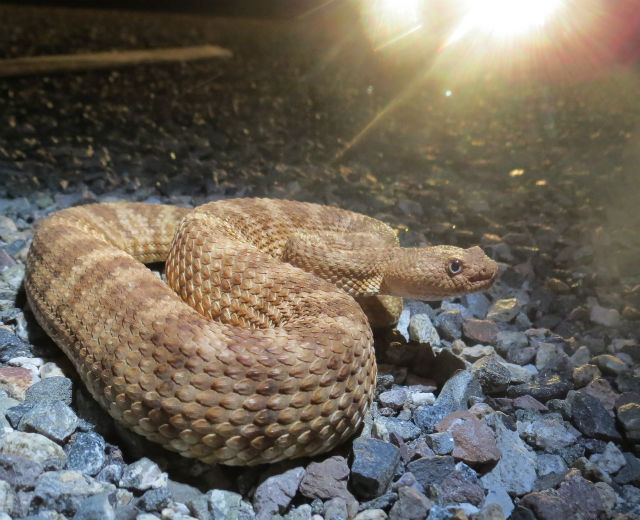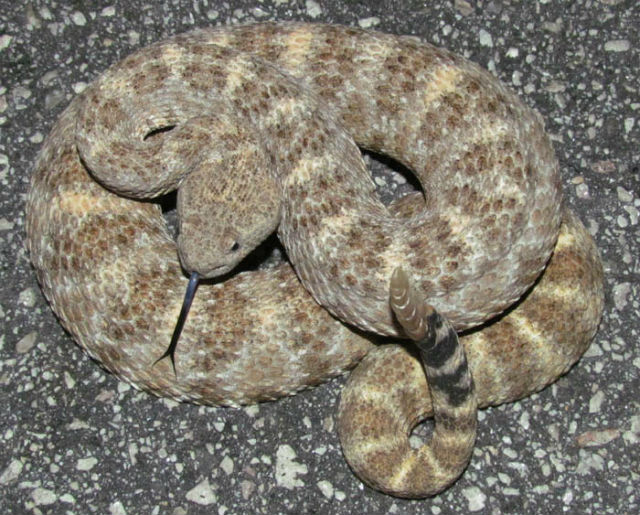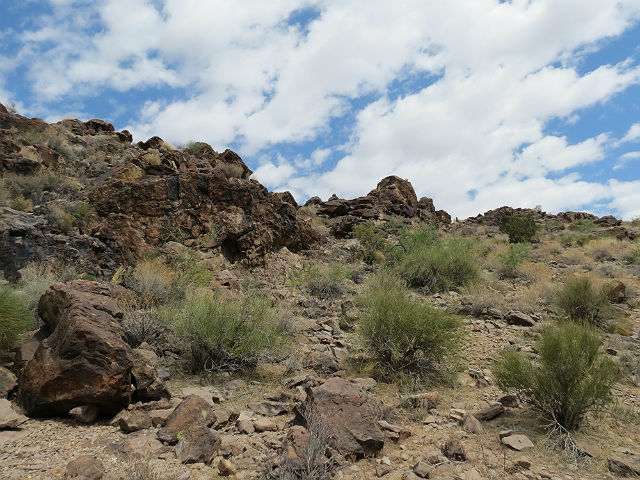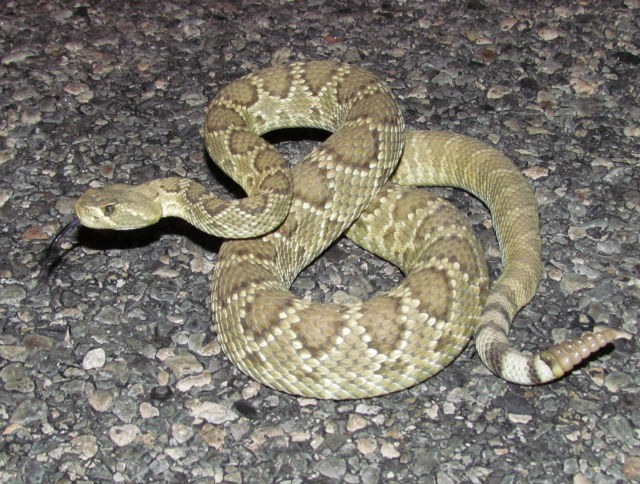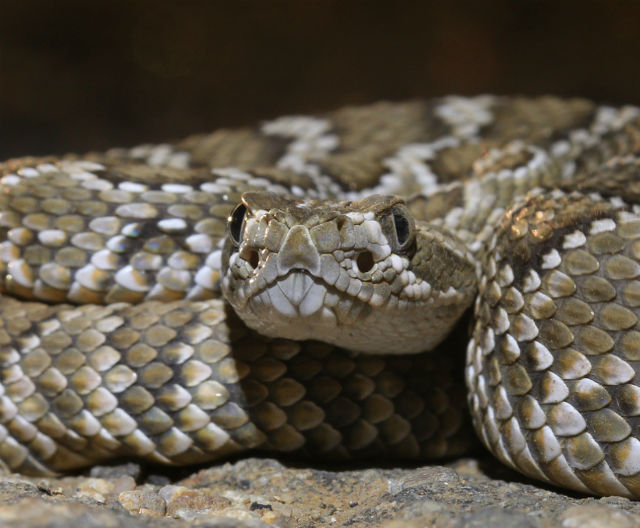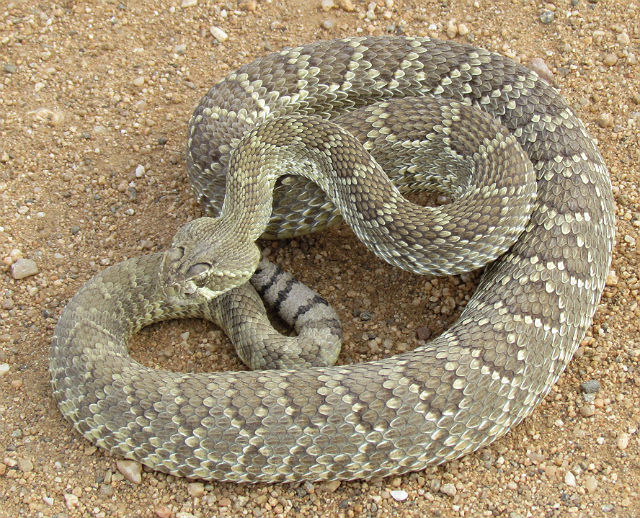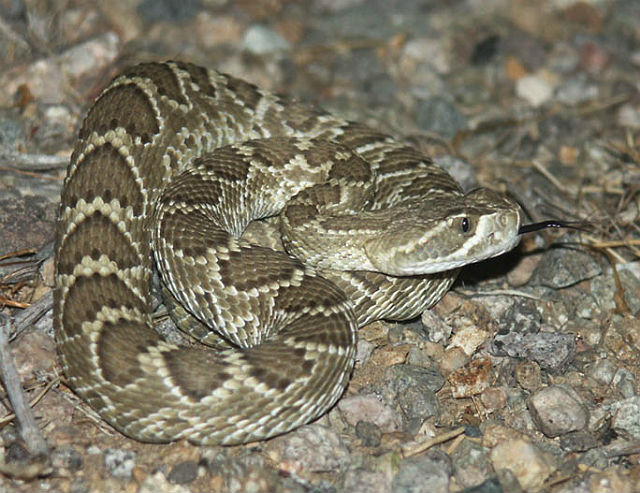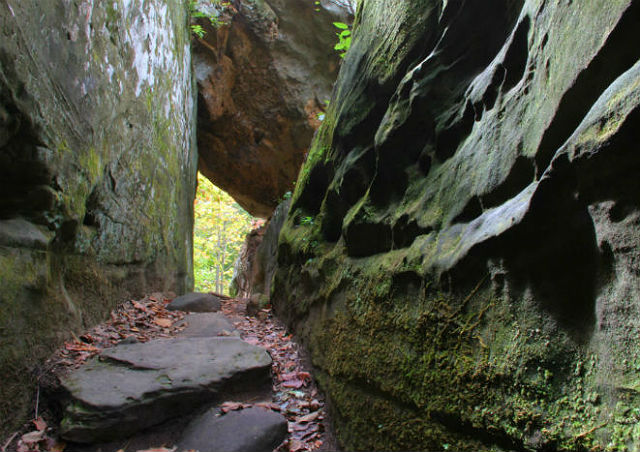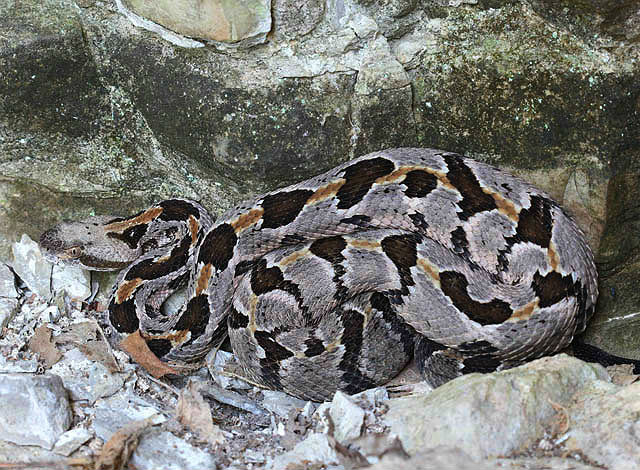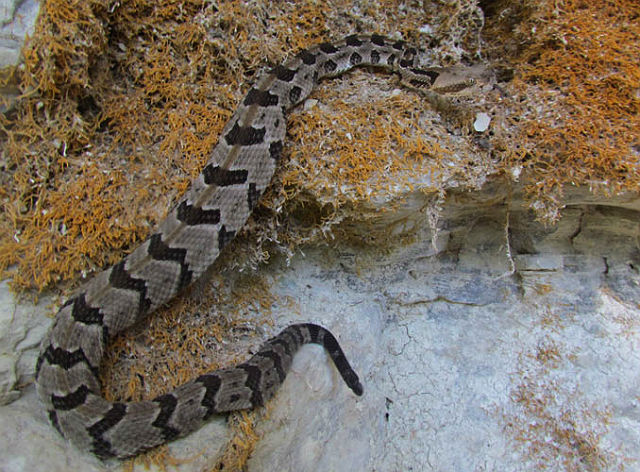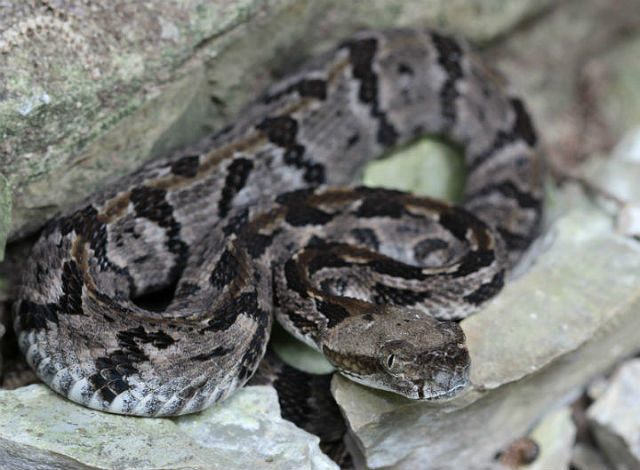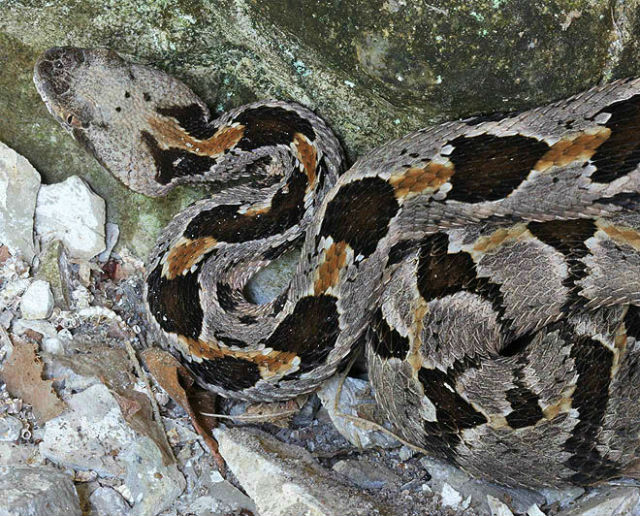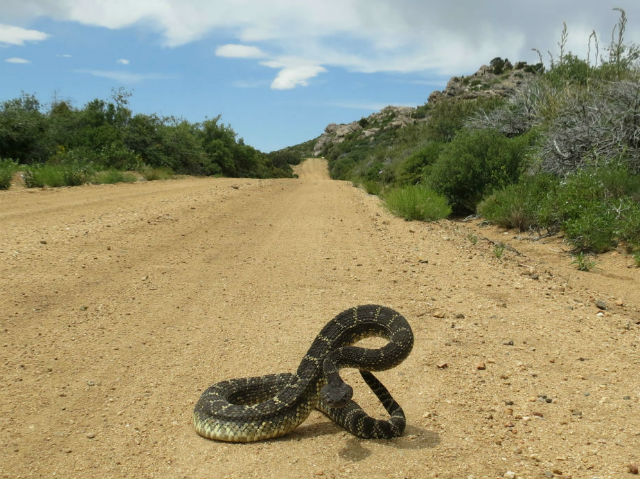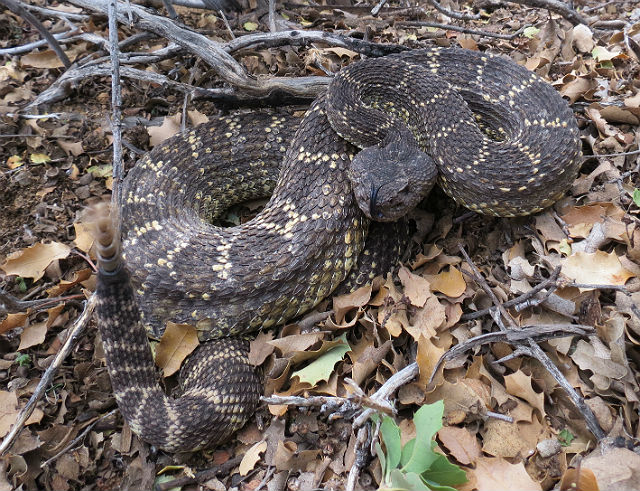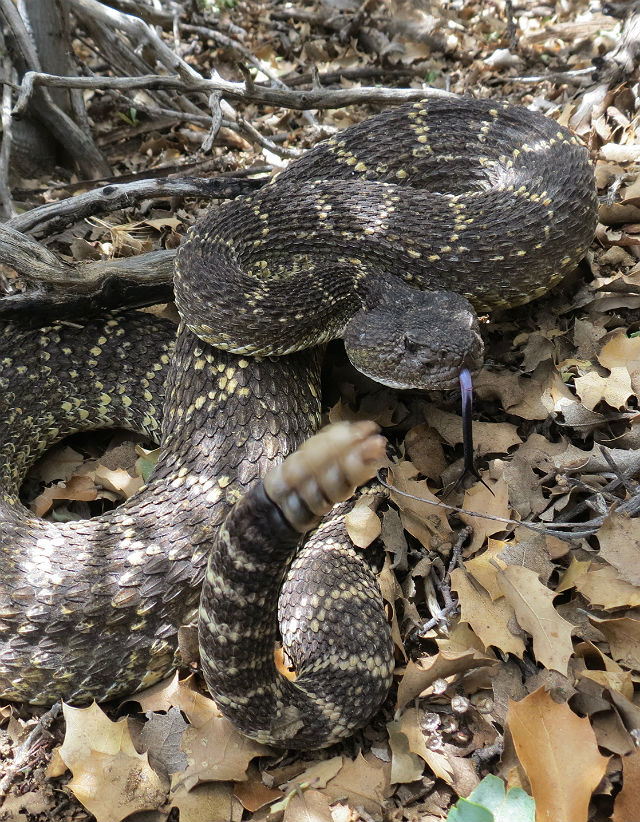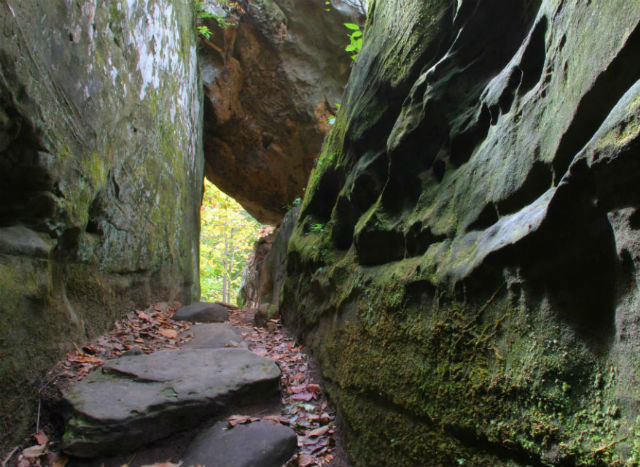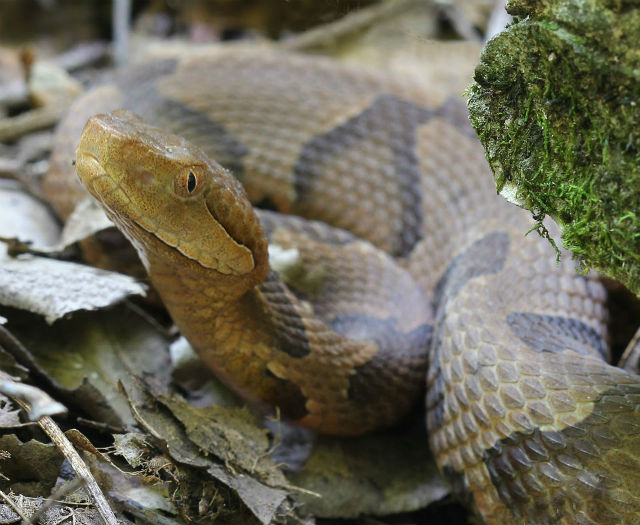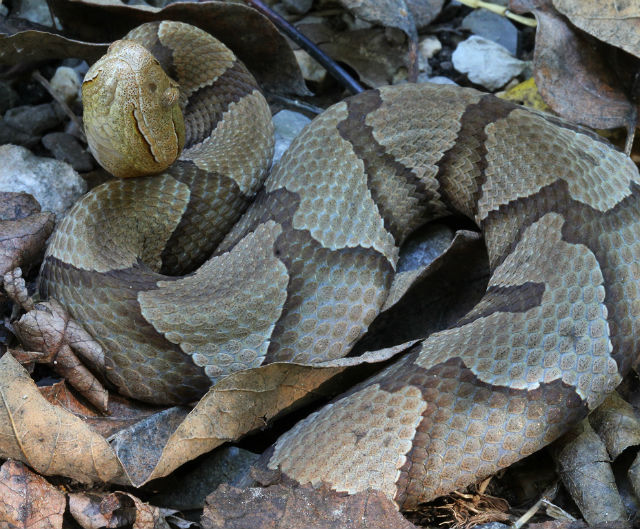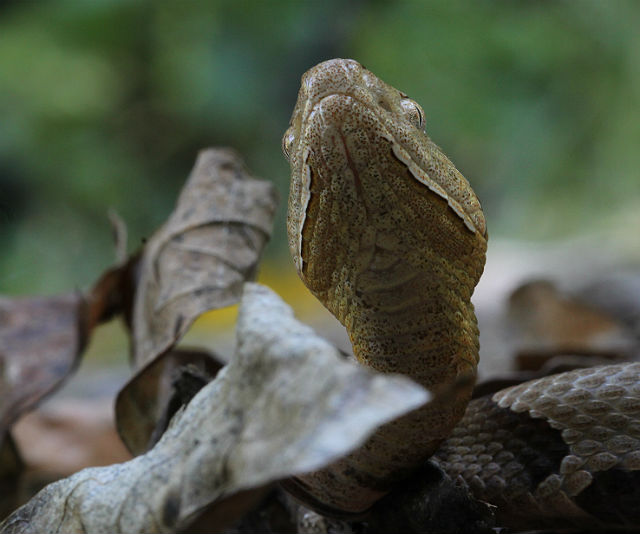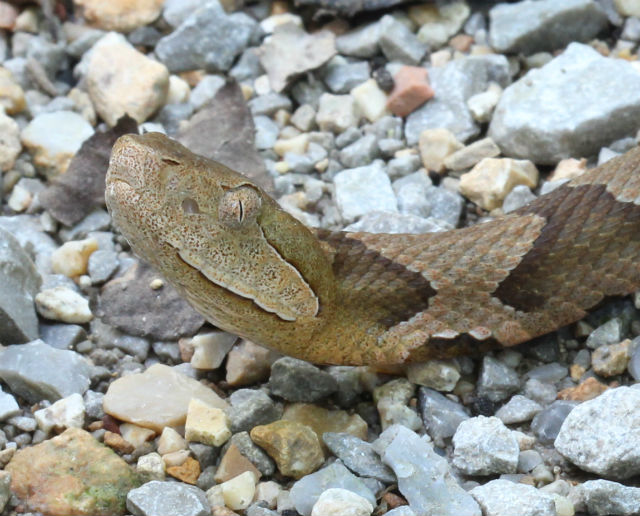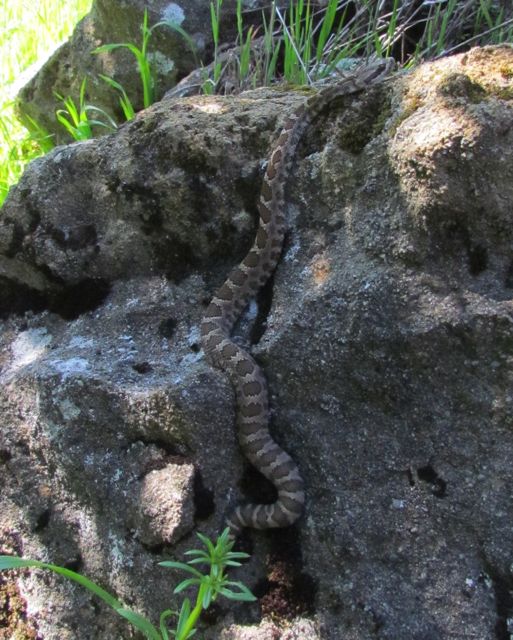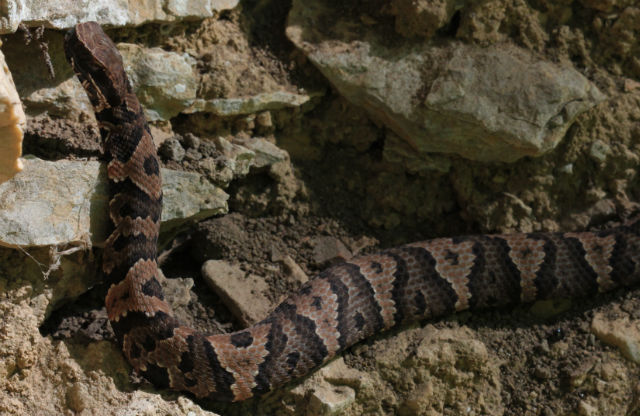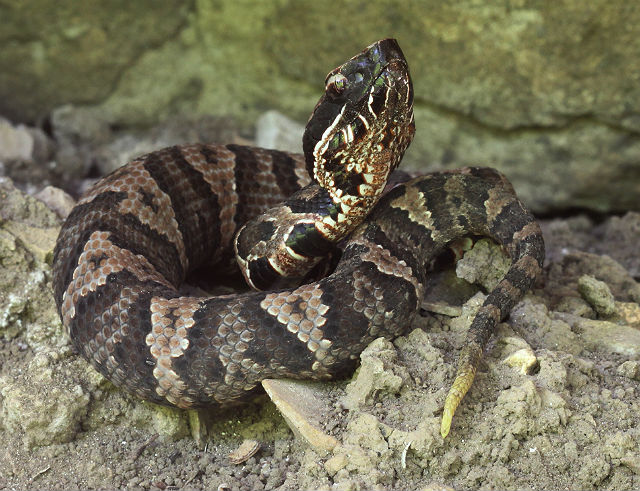This is a small (usually about two feet) rattlesnake that I occasionally encounter on my visits to the Las Vegas area. The species is nocturnal during hot months (April to October) and diurnal during the cooler months of its activity period, which is roughly from November to March.
The common name “sidewinder” alludes to its unusual sideways form of locomotion, moving its body moving in an S-shaped curve, which is thought to give it traction on loose desert sand. It is often found in arid desert flatlands, loose, sandy washes, hard pan flats and rocky areas. I have only found them at night crossing little-used roads.
This snake is usually light tan in color with dark spots. It has rough, keeled scales, which aid in its unique sidewinding locomotion. The projections over each eye (called supraoculars) are pointed and upturned, giving them a horn-like appearance – providing this reptile with the nickname, “Horned Rattlesnake.”
Juveniles twitch their tails to attract lizard prey, a behavior termed “caudal luring.” Adults lose this behavior as they make the transition from lizard prey to a primary diet of desert rodents, birds, and other snakes.
Like other rattlesnakes, Sidewinders give birth to live offspring, producing an average of 10 babies per litter. Baby Sidewinders engage in a remarkable behavioral homeothermy (thermoregulation that maintains a stable internal body temperature regardless of external influence) that has not been observed in any other type of snake. Following birth, they mass together in their natal burrow. Most often, gravid females select an east-facing, small-diameter rodent burrow for giving birth.
For the first week or so of their lives, babies plug the entrance to this burrow during daylight hours, forming a dynamic multiple-individual mass that takes advantage of the hot exterior environment and the cool interior of the burrow to maintain an average aggregate temperature of 90°F (the optimal temperature for shedding). The dynamic mass of neonates modifies the thermal environment at the burrow entrance so that the young can occupy a location that would ordinarily become lethally hot for an individual snake.
Sidewinders have an extraordinarily accelerated lifecycle, with natural life expectancies of females of about 5 years. Like other rattlesnakes, they are a pit vipers and use venom to subdue their prey.

